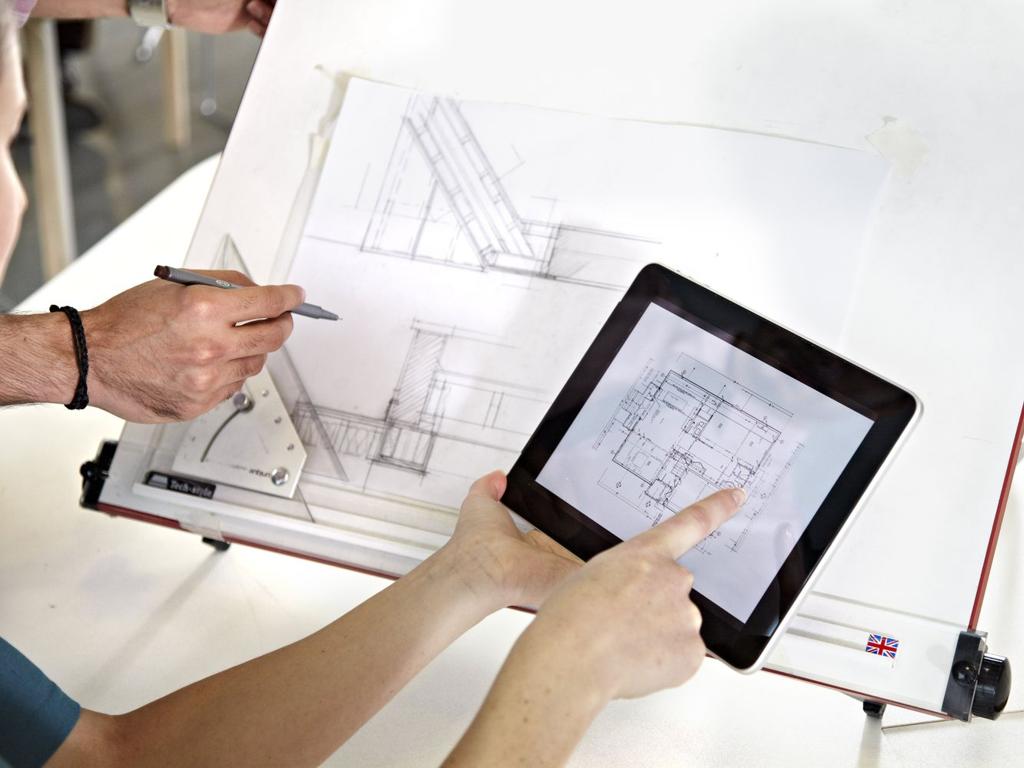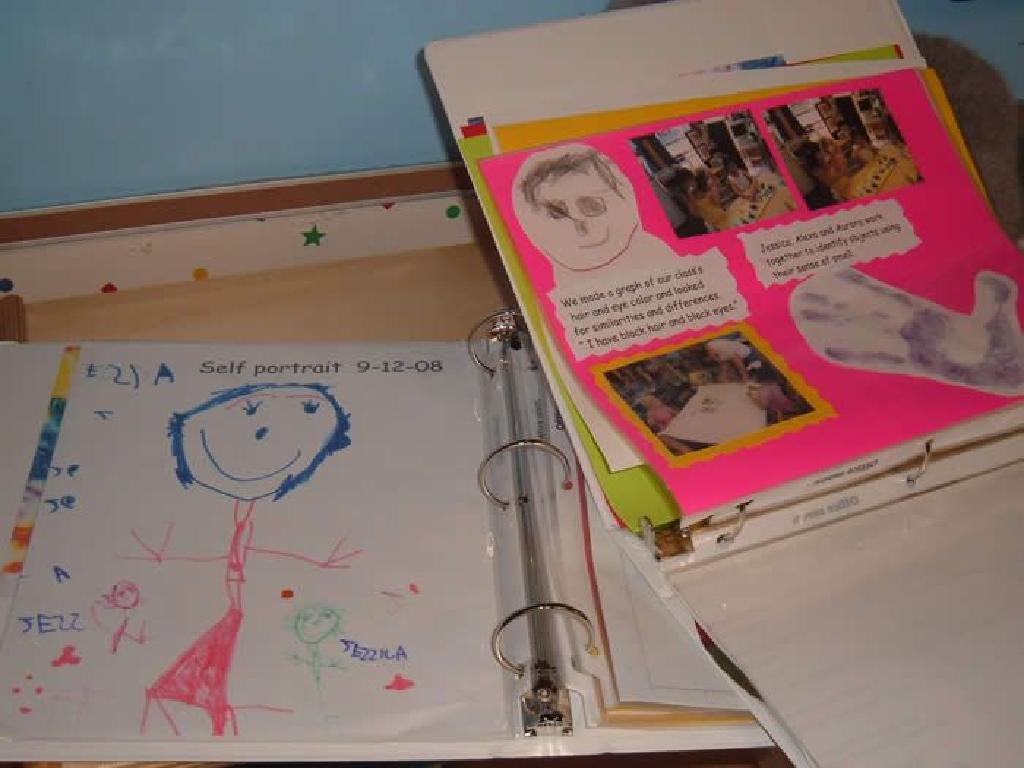Identify Base Words, Prefixes, And Suffixes
Subject: Language arts
Grade: Third grade
Topic: Prefixes And Suffixes
Please LOG IN to download the presentation. Access is available to registered users only.
View More Content
Exploring Word Parts: Prefixes and Suffixes
– What are prefixes and suffixes?
– Prefixes/suffixes are added to base words to alter meaning.
– Discover base words
– Base words stand alone with meaning, like ‘play’.
– How word parts change meaning
– ‘Un’ in ‘unhappy’ changes the meaning of ‘happy’.
– Examples of prefixes and suffixes
– ‘Re’ in ‘redo’ means to do again, ‘ful’ in ‘joyful’ means full of joy.
|
This slide introduces the concept of prefixes and suffixes to third graders, explaining that they are word parts added to the beginning or end of base words to change their meanings. Start by defining each term: a prefix is added to the beginning of a word, a base word is the main part of the word, and a suffix is added to the end. Provide clear examples for each, such as ‘un-‘ meaning ‘not’ or ‘re-‘ meaning ‘again.’ Use visuals or manipulatives to help students see how words can be broken down and reassembled with new meanings. Encourage students to think of words they know and how adding prefixes or suffixes might change their meanings. This foundational understanding will help them decode unfamiliar words and expand their vocabulary.
Exploring Base Words
– What is a base word?
– A word that has meaning on its own
– Examples of base words
– ‘run’, ‘happy’, ‘play’ are all base words
– Changing meaning with additions
– Add prefixes/suffixes to base words to make new words
– Practice with base words
|
This slide introduces the concept of base words to third-grade students. Base words are the simplest form of a word that can stand alone and have meaning. Provide examples such as ‘run’, ‘happy’, and ‘play’ to illustrate words they are already familiar with. Explain that by adding prefixes (beginnings) or suffixes (endings) to these base words, we can create new words with different meanings. For instance, adding ‘un-‘ to ‘happy’ makes ‘unhappy’, which changes the meaning. Encourage students to think of other base words and how they might change with different prefixes or suffixes. Plan a classroom activity where students can practice identifying and creating new words from base words.
Meet the Prefix!
– What is a prefix?
– A prefix is added to the start of a word
– Prefixes change meanings
– Examples: ‘unhappy’, ‘redo’
– ‘Un’ means not, ‘re’ means again
– ‘Preheat’ as an example
– ‘Pre’ means before, like warming up food early!
|
Introduce the concept of a prefix to the students by explaining that it’s a group of letters we add to the beginning of a word to change its meaning. Use examples like ‘unhappy’ where ‘un-‘ means not, showing that the word means not happy. Similarly, ‘redo’ means to do again. Highlight how ‘preheat’ changes the meaning of ‘heat’ to heating something beforehand. Encourage students to think of other words with prefixes and discuss how the meaning of the base word changes. This will help them understand how prefixes can alter meanings and how they can use this knowledge to figure out the meanings of new words they encounter.
Suffix Time!
– What is a suffix?
– A suffix is added to the end of a base word.
– Suffixes change meanings
– Examples: ‘running’, ‘happiness’
– ‘Running’ comes from ‘run’, ‘happiness’ from ‘happy’.
– ‘Playful’ and its base word
– ‘Playful’ means full of play, from ‘play’.
|
This slide introduces the concept of suffixes to third-grade students. A suffix is a group of letters added to the end of a base word that alters its meaning or grammatical function. For example, adding ‘ing’ to ‘run’ changes it from a verb to a present participle, ‘running’. Similarly, ‘ness’ turns the adjective ‘happy’ into the noun ‘happiness’, and ‘ful’ added to ‘play’ creates the adjective ‘playful’, meaning full of play. Encourage students to think of other base words and how adding a suffix can change their meanings. This understanding is crucial for vocabulary development and word comprehension.
Let’s Practice: Prefixes and Suffixes!
– Find the base word in ‘unbelievable’
– ‘Believe’ is the base word in ‘unbelievable’
– Discover the prefix in ‘disappear’
– ‘Dis-‘ is the prefix in ‘disappear’
– Locate the suffix in ‘carefully’
– ‘-ly’ is the suffix in ‘carefully’
– Explain your findings
|
This slide is an interactive class activity designed to help students practice identifying base words, prefixes, and suffixes. Encourage the students to look at each word and break it down into its components. For ‘unbelievable’, guide them to see that ‘un-‘ is a prefix and ‘believe’ is the base word. In ‘disappear’, ‘dis-‘ is the prefix that changes the meaning of the base word ‘appear’. For ‘carefully’, point out that ‘-ly’ is a suffix that turns the adjective ‘careful’ into an adverb. After identifying each part, ask the students to explain how the prefix or suffix changes the meaning of the base word. This will deepen their understanding of how words are constructed and how their meanings can be modified.
Prefix and Suffix Match-Up
– Match prefixes/suffixes to base words
– Combine beginnings (prefixes) and endings (suffixes) with main word parts
– Create and define new words
– Use your new words in sentences to explain what they mean
– Share your words with classmates
– Practice speaking skills and learn from others
– Understand how words are formed
|
This slide introduces a class activity focused on prefixes and suffixes. Students will practice matching them with base words to form new words. They will then use these new words in sentences, helping to solidify their understanding of how prefixes and suffixes alter the meanings of base words. Encourage creativity and ensure they grasp the concept that prefixes modify the beginning of words and suffixes change the end. Provide examples like ‘unhappy’ or ‘runner’ to illustrate. After creating their words, students will share with the class, fostering a collaborative learning environment. Prepare to guide them through the activity, offering support and clarification as needed.
Create Your Own Word!
– Start with a base word
– Add a prefix or suffix
– Examples: ‘un’ + ‘happy’ = ‘unhappy’, ‘care’ + ‘ful’ = ‘careful’
– Write a new word sentence
– Use your new word in a creative sentence
– Share with the class
|
This slide is for a class activity that encourages students to play with language by creating new words using prefixes and suffixes. Start by explaining what base words, prefixes, and suffixes are. Base words stand alone and have meaning (e.g., ‘play’). Prefixes are added to the beginning of a word to change its meaning (e.g., ‘replay’), while suffixes are added to the end of a word (e.g., ‘playing’). Have students choose any base word they like, then add a prefix or suffix to create a new word. They should then write a sentence using this new word to demonstrate their understanding of its meaning. Finally, ask volunteers to share their sentences with the class to foster a collaborative learning environment. This activity will help students understand how words can be modified and will enhance their vocabulary.
Class Activity: Building Words with Prefixes and Suffixes
– Form new words using word cards
– Discuss meanings within your group
– How does adding a prefix or suffix change the word?
– Choose an interesting word
– Present it to the class
– Share why you think it’s interesting and what it means now
|
This interactive group activity is designed to help students understand how prefixes and suffixes alter the meaning of base words. Provide each group with a set of word cards that include a mix of base words, prefixes, and suffixes. Students will combine these cards to create new words and discuss the altered meanings. Encourage them to think about how the addition of a prefix or suffix can change a word’s meaning entirely. After discussion, each group will select one word they find particularly interesting, explain its new meaning, and present it to the class. This will help reinforce their understanding of word construction and enhance their vocabulary. Possible activity variations could include creating the longest word, finding the most dramatic change in meaning, or illustrating the word’s meaning.
Review and Reflection: Base Words, Prefixes, and Suffixes
– Define base word, prefix, suffix
– Base: main part of a word; Prefix: beginning part; Suffix: ending part
– How prefixes/suffixes alter meaning
– Prefix ‘un-‘ means not; Suffix ‘-ful’ means full of
– Share a learning from today
– Reflect on new words discovered
|
This slide aims to consolidate the students’ understanding of base words, prefixes, and suffixes. Begin by reviewing the definitions: a base word is the main part of the word that holds the core meaning, a prefix is added to the beginning of a base word to change its meaning, and a suffix is added to the end. Provide examples such as ‘happy’ (base word), ‘unhappy’ (prefix added), and ‘happiness’ (suffix added). Encourage students to share one new thing they learned about how prefixes or suffixes can change the meaning of a word. This reflection helps reinforce their learning and allows them to express their understanding. Finally, ask them to think about new words they’ve discovered through this lesson and how they might use them in their daily language.






